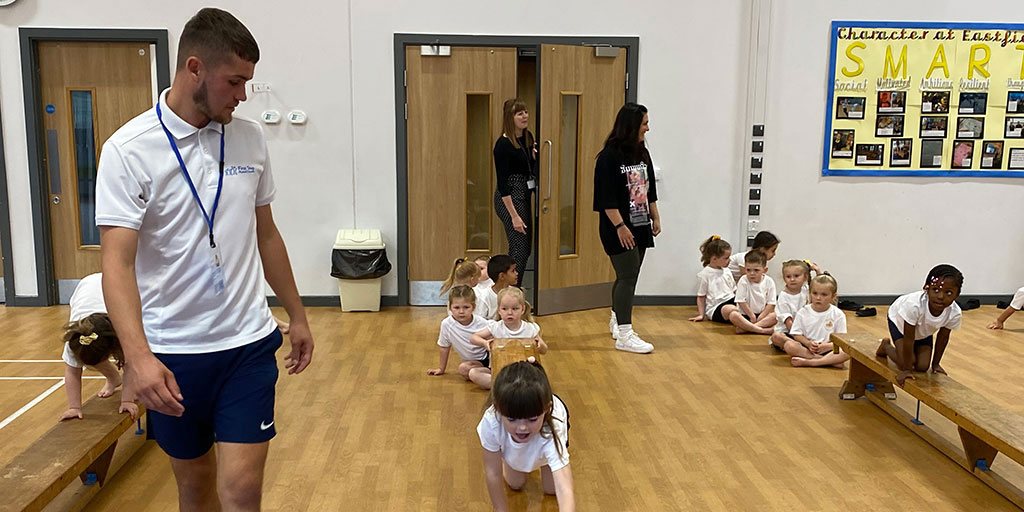First experiences of any activities can shape how children respond to them throughout their lives. That’s why it’s essential to make those experiences as positive as possible. With the massive benefits to be had from physical activity, positive must mean more than something that’s just good. It must be the type of experience that encourages life-long learning, physical confidence and is positively impactful when they’re at school.
Developing the confidence to teach physical activity can be very difficult for teachers. With little training, it can sometimes feel like a struggle to be confident in your ability to teach PE. First Step PE is here to help, with some easy practical steps to get you up and running.
Step 1: Make space for PE
Don’t put off a PE lesson in favour of academic lessons. Carve out time in the weekly timetable in advance for a PE lesson. Always take into consideration the equipment you might need and time for changing in and out of their uniform. You can use a traffic-light system to signal time for PE. Green, amber, and red can signify time for PE, time for changing, and time to put away any equipment as a group respectively.
Having a specific time carved out for PE can also help you prepare better for the lesson itself. It gives you time to address the curriculum objectives and explore the types of movement available.
Step 2: Preparing for PE
PE lessons can give you lots of options for engaging children in dynamic movement. You can use PE equipment such as benches, collapsible gyms, cones, and bean bags, which can help pupils develop their imaginations. Similar to a redesign of a school playground or directed and self-directed play, standard equipment found in schools for PE can be used to create obstacle courses and to set up structured lessons including Dodgeball or Stick in the Mud.
Make sure you prepare a list of the equipment you might need as well as a structure that helps children put away the equipment. Being able to put up and take down equipment can help them develop respect for their environment, communicate proactively and work collaboratively towards a goal.
Step 3: Offer a varied experience
Making time for PE lessons in your class schedule should be your first point of call. For the most part, engaging children in any kind of movement can be an excellent tool for learning, especially for those who are just starting school. Movement and moving freely is one of the first experiences they’ve had so use it to your benefit. Maths on the move and active storytime for example help them learn new concepts and as they age, they’ll still be memorable.
Step 4: Boys and girls should be encouraged equally
Girls and boys are often affected differently by negative experiences in sport. Regardless, the impact is no less damaging to their self-esteem, physical confidence and ultimately their health and wellbeing because of these differences. Boys and girls can both feel uncomfortable with sport, physical exertion, and mixed sporting environments.
Making sure that boys and girls engage equally in sport can help both genders proactively learn from each other. Both genders need to value the contributions that each can make through sport. Highlight the positive attributes of individual pupils and encourage all pupils to engage in lessons with a variety of games and activities.
Step 5: Be a role model for physical activity
Encourage physical activity and healthy lifestyles throughout the school. Teachers should be personal role models for children where physical activity is concerned. Pointing out, for example, healthy foods referenced in scenarios used to explain mathematical concepts can help to re-affirm healthy habits.
Use assemblies and correspondence with parents to encourage physical activity at home and at school. Remind parents and children what days they need to bring their kit, what activities they can engage in at home or on the way home to encourage physical activity, as well as encouraging active and sustainable travel to and from school.
When reviewing and evaluating behaviour in class, use their performance in PE to reward good behaviour. Don’t solely focus on physical prowess, but on improvements in skill, answering questions on healthy foods and showcasing respect for their classmates in PE. This way, you can make PE an everyday experience that has consistent positive attributes attached to it.




